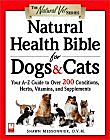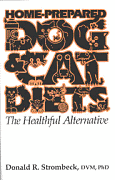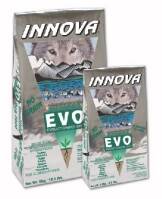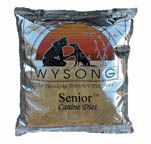| Your pets diet is an important part of their Diabetes
treatment.
You and your vet are the best judge what is good for your pet. Consult your veterinarian before changing your pets' diet. Being consistent is very important. Amounts! Feeding Times! On this page you will find some of the recipes I prepare for Queenie as well as some recipes I have found in different Diabetes Publications! Plus homemade Science Diet Recipes that my vet Dr. Bob supplied. There are also recipes that others on the pet diabetes email list feed their pets and links to science diet etc. Margo's Recipe for Alex follows and was recommended by a vet nutritionist. This site will continue to be dedicated to showing all diets If you have a recipe you are feeding your diabetic animal please forward it to me and I will be happy to include it on this website. If you are using a different commercial food then the ones here please send the appropriate link and your review of the food and it will be included. Read the homecooked recipe that Margo was given by a vet nutritionist following these links to dog foods that you can buy!
|
|||||||||||||||||||||||||||||||||||||||||||||||||||||||||||||||
| Updated April 17, 2005
This is the recipe that Margo feeds Alex and the one most recommended. Read Alex's Story here Alex weighs 60 pounds and gets the following at each meal: 1 cup brown long grain rice 1 cup chicken breast 1/2 cup green beans 1/2 cup mixed vegetables 1/2 cup cottage cheese This vet nutritionist recommended this diet along with one human multi-vitamin a day. What Anne feeds Max Read Max's Story Here Max's food is per day divided in half. 1 cup cooked oatmeal 1 cup cooked carrots and green beans put through the food processor 1 hard boiled egg chopped up 1/4 can Wellness Senior wet food Supplements (the mg's are for whole capsules or tablets):
I mix four days worth of supplements with pure pumpkin divide evenly. Treats (all three love these treats):
He's on 5.5 units of N twice a day after meals I have checked with Max's internal specialist on each change in his
diet and supplements.
Anne & Max (dd, dx 6/18/02, blind 8/18/02) Update Mon, 18 Apr 2005 Hi Judy,
Treats:
Diets have changed over the years and Queenie lived for eight years on a variety of the following diets but now with hometesting...diets can be put together better. Queenie went to the Bridge on March 3rd, 2003 and was diabetic from April of 1995. What I feed Queenie is next. Queenie doesn't eat dogfood. I have tried to keep her food consistent and always feed her the same amount for at least 2 or 3 of her daily meals. When she first became a diabetic 6 years ago I had a hard time regulating her insulin dosage. My mom is a diabetic and I attended her nutrition classes at the hospital with her and after reading everything I could find I realized that bread and fiber should be an important part of her meal. Just by adding bread to her meat her blood glucose seemed to stabilize immediately. I really had to squeeze that meat into the bread in the beginning so she could not pick the meat out. Now she eats it all with no problem. I either warm her food in the microwave or feed it to her frozen. I think she likes to gnaw on it when it is frozen like a dog would chew on a bone or maybe it feels good on her gums. I cook all Queen's meats and do not feed raw. I am afraid of salmonella and E-coli germs. I feel her immune system is not as high as it should be with her being a diabetic so I feel more secure doing this. Besides Queenie turns her nose up at raw so there you go and seems to get diarrhea from the raw she does eat. So no flames because my dog eats grains etc. as that is our choice as your choice might be raw, etc. The thing is all of our pets metabolize foods differently, exercise differently etc. so you have to find what is best for your pet and go with that. On the brighter side Queenie still has full vision, etc so what I feed her is definitely right for her even though it might not be right for your pet. Smile and hug all of our furbabies. If your dog is stabilized on dogfood. Lucky you! Don't change their diet because it would be so much easier to keep you pet's blood glucose level. Please feel free to send me any suggestions you might have. Judy |
|||||||||||||||||||||||||||||||||||||||||||||||||||||||||||||||
| Things to Save When Cooking your own meals.
All juices from roasts and chickens. Skim the fat off. Freeze the juice in ice cube trays or 1/2 cup per ziplock bag. Any left over meats.
These are great items to have on hand. |
|||||||||||||||||||||||||||||||||||||||||||||||||||||||||||||||
| Queen's Basic Diet One
a 3 to 4 pound roast of beef one loaf rye bread or whole wheat bread 1/2 cup drippings(fat removed) water Cook the roast well done. Remove from the pan and add some ice cubes
to the pan so the fat will harden and you can skim it off of the top. Remove
all fat and grizzle from the roast (they don't need a pancreatitis attack)
Place the meat in a large bowl and break up into small pieces with your
This makes about 30 to 40 bags. I use two of these bags a day. One with the morning shot and one at noon. I zap it in the microwave for about a minute until warm. I had good success regulating here on the above diet but after the bout with antibiotics she developed a yeast infection a few years ago and she has now been on the following diet for the last three years. Queen's Basic Diet Two(This is the diet
that I have found works best for Queenie)
Queen's Morning Meal 1 bag basic recipe (Diet One or Two)
|
|||||||||||||||||||||||||||||||||||||||||||||||||||||||||||||||
| This recipe was taken from the following book which I would recommend
buying
Read the book review on this book Dog & Cat Care the Natural Way - Natural Pet Cures Dr John Heinerman Foreward by Robert Goldstein, V.M.D. 1998 by Prentice Hall, Inc. 
Cookies for Diabetic Dogs Susan's Oatmeal Cookies 3 cups oatmeal uncooked 1 cup cold filtered water 1 1/2 cups whole-wheat flour 1 tablespoon parlsley, chopped 2 egg yolks 1 cup raisins (raisins can be toxic) Click Here to Read the article 1 teaspoon baking soda 2 cloves garlic, chopped Mix all ingredients together. Spoon onto a greased cookie sheet. Bake 12 to 15 minutes at 350 degrees. Place on a cooling rack. Store in refrigerator for up to two months. note on the above recipe
vitamin content
Now when I baked the recipe I took the calories 435 for the cup of raisins
and I did the same for each item in the recipe...coming up with a total
amount of calories for the recipe...I then made the recipe and made the
same size cookies or as close as possible...count the number of cookies
you made and divide it into the total calories from the batch of cookies....this
will tell you how many calories in each cookie.
If you don't want to use raisins and are not comfortable with using them .. then don't ... I myself did use the raisins. Hope this helps those that requested the information and again I repeat what is right for one pet is not right for another...use common judgement when reading anything on the web or in bookform because they are always one persons opinion. |
|||||||||||||||||||||||||||||||||||||||||||||||||||||||||||||||
| Recipes for Homemade Diets from Hill's Pet Products
canine reducing diet 1/4 lb. ground round or other lean beef 1/2 cup cottage cheese(uncreamed) 2 cups drained canned carrots 2 cups drained canned green beans (here again queenie had a terrible gas bloating due to these) 1 1/2 teaspoon dicalcium phosphate2 (dr bob did blood tests on queenie for calcium, potassium etc she did not need additional amounts of this in her food...so again see your vet and have a blood profile done which will determine calcium, potassium levels in your pet) Cook beef in skillet, stirring until lightly browned: pour off fat and cool. Add remaining ingredients and balanced vitamin-mineral supplement and mix well. Keep covered in refrigerator. Yield 1 3/4 pounds Anaylsis
Feeding Guide
Homemade Treats from Hills - Thanks Virginia for sending this url URL for Hill's this was found at but they removed it! http://www.hillspet.com/HillsFAQ_Treats.asp If you are using canned product, cut up some bite-sized pieces and bake in your microwave for approximately two and a half to three minutes. For a conventional oven bake at 350 degrees for approximately thirty minutes or until desired texture. If you are feeding the dry form, grind the kibbles into flour using a blender and mix with enough water to form dough. Shape into "cookies" and bake them on a cookie sheet in the oven for approximately thirty minutes at 350 degrees until crispy. Garlic powder (no salt) may be added to enhance the palatability. All homemade treats need to be stored in the refrigerator no longer than five to seven days to maintain their freshness and prevent spoilage. As you know, it is very important for your pet to stay strictly on the recommended food. However, giving your pet these tasty homemade treats will allow them to feel special! These homemade treats should not exceed 5% of your pet's total daily intake as baking the treats does alter the nutritional characteristics of your pet's diet. |
|||||||||||||||||||||||||||||||||||||||||||||||||||||||||||||||
| Dr. Pitcairn's Complete Guide to Natural Health for
Dogs & Cats
by Richard H. Pitcairn, D.V.M.,Ph.D. & Susan Hubble Pitcairn  Read
the book review on this book Read
the book review on this book
(This book is one of my favourite books and I take it on vacations as it has a great emergency section in it) Diabetes Diet for Dogs(from first edition book) 1 medium egg 1/2 cup lean or organ meat 2 3/4 cups cooked brown rice or other grain 1/4 cup grated or chopped vegetables daily supplements as recommended(found elsewhere in book) Combine all ingredients and serve. In this book you will also find two diabetic recipes for cats! |
|||||||||||||||||||||||||||||||||||||||||||||||||||||||||||||||
| Failing Kidney Recipe
Special thanks to Dr. Murray McMullen of Windsor, Ontario, who writes a weekly pet column for our daily newspaper, The Windsor Star, and gave us permission to use this recipe. This is part of the write-up that accompanied the recipe in the paper. Do not make the following recipe for your pet until your family vet has approved it. This is only for picky dogs that won't eat regular presciption kidney or liver diets. Lightly brown 1/4 pound regular ground beef. Add two cups cooked white rice(I USE BROWN LONG GRAIN RICE , without salt. Add in one finely chopped or diced hard boiled egg and three slices crumbled stale white bread(AGAIN I USE RYE OR WHOLE WHEAT BREAD). Each batch also gets one teaspoon calcium carbonate added to it. Your vet can get the powder or it is available at health food stores. (I DO NOT USE THIS BECAUSE DR. BOB TESTED QUEENIE'S CALCIUM LEVEL IN HER BLOOD AND SHE DID NOT NEED ADDITIONAL CALCIUM FROM HER BLOOD TESTS) Stir these ingredients well to mix them up or a picky dog will pick out the meat. If too dry, add a little water. This recipe yields 1 1/4 pounds which should be enough for a 30 lb.
dog.
You can substitute any meat for the beef, i.e. chicken, turkey, lamb or even lean pork. ( I use roast beef) If your dog likes the diet, then cook up a week's supply, divide into individual portions and freeze. Extra vitamins and trace minerals are also needed and chewables or crushable pills are available from your dog's vet and should be given daily. Upon talking to Dr. McMullen he told me diabetic dogs need a lot of fiber in their diet so I personally would add a 1/4 cup of wheat or oat bran to the recipe and use whole wheat bread instead of white bread in order to increase the fiber content. The meat can be increases in this recipe for the diabetic dog as protein is reduced in a kidney diet as protein is hard on the failing kidneys! |
|||||||||||||||||||||||||||||||||||||||||||||||||||||||||||||||
| Hilde's Recipes
and this Susan is also a nurse with a medical background Susan Hudson RN, MSN, CCRN Read Hilde's Story - She was diabetic for seven years - Click Here Hilde's Favorite Recipes 24lb Terri-Poo on 13units NPH every morning Years on insulin = 7 **Note: it is important to avoid the following preservatives: MSG, BHA, BHT. MSG stimulates the pancreas to produce insulin in non-insulin dependent diabetics, and stresses the pancreas even further with those diabetics that are insulin dependent. BHA & BHT are degraded by the liver and excreted by the kidneys, extra stresses that diabetics can do without ! Boiled Dinner 3 lbs. ground meat (beef, lean beef heart, chicken, turkey, deer, or lamb) 3 cups cooked brown rice (don't use processed rice such as minute rice lacks necessary starches and minerals) 3 cups frozen mixed veggies (can also use stir fry veggies both available in large bags at Sam's Club, Gordon Foods, and most bulk food sections) 1.5 teaspoon salt Boil ground meat in large pot until done. Add frozen veggies, and salt. When veggies are cooked, remove pot from heat. Drain and rinse in large colander using warm water. Mix in rice. Place in quart size freezer bags and place in freezer. Yield = 9 cups (9 18 meals, depending on portion size). Beans' N Rice
One to One Goulash
Meatloaf
Ann & Cookie...& Claire Recipes Hi Judy and Queenie! Thank you so much for all the wonderful information I have learned from the Muffin site! It has helped tremendously to learn about Cookie's diabetes and what others are doing for their diabetic dogs. How nice to find out that, unwittingly, I am doing SOMETHING right for Cookie's homemade meals...brown Basmati rice. It is available locally, in North Carolina, in many grocery stores...Texmati (brand name) long grain American Basmati rice and it has no additives. There is also a toll-free # 800-232-RICE. There was a request for recipes recently, so here is Cookie's: 2 cups cooked brown Basmati rice 2 cups cooked old-fashioned oatmeal, no additives 4 cups pureed canned, no additives, vegetables...Cookie likes carrots and green beans best. 4 cups defatted, boiled chicken breast, finely ground in food processor All ingredients are then mixed with a heavy-duty electric stand mixer. This recipe makes plenty for Cookie, an 8 pound Yorkie...about a week's worth. I freeze all that won't be used right away. Our other dog, Claire, a German Wirehair pointer, also has to have a little of Cookie's food mixed with hers...she feels neglected otherwise! Cookie gets vitamin supplements and digestive enzymes (ProZyme) with her meals. Yep, Claire gets those too. "Of course, each of these three types of rice may be brown or white.
What Judy is feeding her diabetic pet Flip Hi Judy: I am going to write up some cautions and some of Flip's meals so that those that are interested can use them as a guide. Supplements are something I want to cover. A chronically ill dogs
has greater needs than the healthy dog does. A healthy dog's immune
system would be able to handle many challenges; a chronically ill dog doesn't
have the
Flip is nine plus years and has been diabetic since age three. He also has Hyperlipidemia, Hypothyroidism, and occasional bouts of Pancreatitis. He had cataract surgery before age 4, and has a couple of UTI's each year. He weighs 22.5 pounds. He now gets 4 units bid of Humulin N. Been on the N the whole time. His daily supplements are as follows: Heaping half teaspoon of Bertes Blend. Twice daily. (source, B-naturals.com)
Flip gets no grains. His carbohydrates come from vegetables.
Grains metabolize to sugar very quickly and can cause a sudden rise in
BG's. The vegetables are digested more slowly and contain valuable
fiber and some
This is not to say, for a treat he may have a reduced fat Trisket or cracker. Mostly, his snacks will be a small bite of raw chicken breast, deskinned or a bite of canned Mackerel and a couple of tablespoons of veggies. When he is on anti-biotics one of his snacks will be live yogurt with extra probiotic powder mixed in to replace the healthy gut flora that is killed by the antibiotics. I weigh his meat serving. He gets 6 ozs of meat. Whether that be canned Mackerel, Salmon, Xtra lean ground beef, chicken gizzards, breast carcass, chicken wing, skinned necks, venison, water pac tuna (rarely), beef heart, and kidney. He gets very little liver as this doesn't seem to agree with him. I make up for the liver with B vitamins. Vegetables are as follows and he gets about 3/4 cup per meail.
All will be NO Salt which are available in the grocery (you just have to
read your labels) You can use a juicer and pulp fresh veggies; you
have to do this to
Turnips with roots or without
NO corn, peas, tomatoes, eggplant, onions, bell pepper, beans (lima, pinto,etc) He does get dairy products: Cottage cheese and live plain yogurt--mostly as snacks About once a week he will get a whole egg with crunched up shell included.
If Flip did not have the Hyperlipidemia I would include Cold Pressed Flax Seed Oil or Salmon oil. Because of his super high trygylcerides, I have to leave off the oil and any excess fat. I gave him an attack of Pancreatitis leaving the skin on chicken necks before I knew NOT to do this. If you lightly cook the meat, remember you CANNOT feed cooked bones, you can remove all fat by refrigerating and removing the jelled fat. We have fruit trees in our yard; I try to monitor how much he gets.
Peaches, Pears, Persimmons, and figs. A little fresh fruit seems
to be okay. I like for him to get it on a full stomach and not by
itself. He also gets a bite
Judy and Flip (who is glad to share his good stuff)
Some suggestions from Edward Murray on diets in diabetic dogs I have two dogs also and know well the problem of feeding them differently. The solution I worked out with a diabetes specialist has them both on the same diet and it is not W/D. Here are a few points she has made in terms of my dog's food to mention to your vet, but also remember that he/she works for you, not the other way around! 1. W/D is not an "ideal" food for a diabetic dog. In fact, it
was developed at University of California Davis for the specific purpose
of fattening up diabetic cats who had significant weight loss. Your vet
can verify this with Hills.
Your can do a little research and use the Science Diet Light or even
W/D as a guideline and come up with your own food that matches the calories,
fat, protein, fiber and carbohydrates. The advantage of the commercial
products is that someone else does all the calculations and manufactures
the food so that it is generally consistent, but there is absolutely no
reason you can't feed YOUR dog what you want to feed her so long as you
control what and when
Edward Murray on feeding fruits In answer to a question about fruit, I think specifically grapes, I cavalierly stated that all that mattered was calories. Afterwards,that didn't seem right so I started digging. In some cases, sugar content and calories are directly related. In other cases, this is not the case. A high sugar content will have a direct impact on blood glucose levels while a higher number of calories from fiber, fat, starch and organic acids which contribute to the calories will not impact BG levels as severely because it takes the body longer to digest than most sugars which are absorbed rapidly. Looking specifically at grapes, a 100 gram portion contains 16.4 grams of sugar and 67 kilocalories. By contrast, 100g of avocado (yes, it is technically a fruit) has only 0.9 grams of sugar, but 177 calories from both the fiber and fat. In terms of overall diet, you have to add the calories, but the data here indicates that an avocado is probably a better choice for a diabetic than a comparable amount of grapes in terms of impact on blood glucose with the former likely to cause a spike and the latter to raise the BG more slowly. Of course, the occasional grape given as a treat is not the same as eating 100 grams of avocado in one sitting. (I'll have to see how many kilograms of grapes my neighbor has so conveniently grown on the fence which my little Anna is eyeing and checking to see if they are ripe daily now because the second they ripen, they are hers unless the birds beat her to the punch. One thing that stands out looking at the data is that while a a raw fig at 6.9 grams of sugar looks like a good choice for a diabetic pet with less than half the sugar of a grape, 100 grams of dried fig has roughly 10 times as much sugar. This ratio seems to hold for most dried fruits, including raisins. While not directly related to fruits in most cases, there are difference
between cooked and raw food in terms of sugar concentration (usually relatively
minor) and the rate at which it is digested and hence absorbed.
http://www.nal.usda.gov/fnic/foodcomp/Data/ Edward Murray on Yams, Brown Rice, Corn , Barley
and Potatoes
This might be useful to the whole list. What I did was "normalize" these values based on the weight of each in a cup and then compare them all to yams which have the highest level of fiber of these four staples. Calories
Protein
Total lipid (fat)
Carbohydrates
Fiber
In terms of a diabetic diet, issues of allergies aside, yams and barley are both good sources of fiber. All these staples are very close in terms of calories. While the carbohydrates vary, the variance is probably not all that significant. Yams and potatoes are quite low in terms of fat with corn providing 9 times more, rice 6.5 and barley 3 times as much as yams. This is a two edged sword. Lipids are essential to all animals and a better source of energy for a diabetic than carbohydrates which quickly drive up BG's. There is an irony as far as lipids and triglycerides such that if lipids are too low, triglycerides will rise. Sometimes, the way to lower triglycerides is to raise the amount of lipids in the diet so high levels of lipids are not in themselves "bad" for a diabetic. Plain old white potatoes with their skins boiled, without salt or butter are perhaps surprisingly not a bad diabetic food. They have a lower level of carbohydrates than any of these other staples. Almost no lipids. They are about the same as a yam as far as proteins. What they lack is fiber. The USDA is in the process of updating its nutrient database to include details of sugars and starches which play a significant role in the glycemic impact of foods. A very important consideration with these foods is the mix of vitamins, minerals, amino acides and the types of fat they provide. As with humans, probably the best approach is to vary the diet to include all of these foods, making adjustments for the large variations in protein and lipids that some provide by adjusting the amounts of other foods such as meats. This way, you ensure that your pet is getting a range of micronutrients in a form that is highly available to the body compared with supplements. Thank You Ed for taking time to continue providing information for this website and helping making food preparation for owners of diabetic pets a little easier.
Deb's Recipe for Mork Mork's recipe for good health 6 large boneless skinless chicken breast 8 cups of water 3 cups of brown rice 1 cup barley 1 cup oat bran a bit of regular oatmeal as a thickener if needed. 2 packages frozen chopped spinach 1 large can pumpkin assorted veggies, celery for broth flavor, broccoli, carrots, green beans,any kind of squash will help the fibre content too In a 4 quart saucepan I start by boiling the chicken breast lightly in the 8 cups of water, enough to cook them but not boiled to death. Skim the fat, there shouldn't be much, I use a paper towel or if I use boned chicken will put it in the fridge overnight and pick off the cold fat. I was using an organic broth to flavor but found it had onions in it so am now making my own broth by adding celery, grated carotts and a smidge of salt for flavor. Add the rice and barley and cook till soft, usually 30 to 45 minutes, while this is cooking I'll be chopping th chicken into small peices and any veges that I'm going to use, you can try different ones and use different things, I've found Mork really likes change and gets bored with eating the same thing all the time. After the rice and barley are soft and well cooked add the oat bran and cook for five minutes, you'll need to keep a close eye at this point as it will burn and stick to the bottom of the pan. The mix should be nice and thick enough to form into balls, very sticky when warm and easier to handle once cooled off. If it's not thick enough add some oatmeal to thicken, the oatmeal only takes a couple of minutes to cook in. Mork is 17 lbs and I form into ¾ cup balls and freeze, he gets one of these twice a day with a couple of teaspoons of cottage mixed in. He also gets 500 mg of Milk Thistle, 100 iu vitimin e,200 mcg chromium, 250 mcg vitimin b-12 , half a visorbits and Can-Addese which is a powder to help digestion. He gets all this twice a day with his meals. He also gets ¼ cup of dry food if his bg's are low, he's almost always high in the morning and low at night. Mork has now gone to the Rainbow Bridge Email Deb for more info on
Mork's Diet
Julie Hise Email: endoxazo@labpuppymail.com Here is a tasty, high in fiber recipe that doesn't raise the blood glucose
levels tremendously.
Yogurt Treats
For those pets with congestive heart failure Hill's Recipes for Homemade Diets Canine Low Salt Diet 1/4 lb. ground round or other lean beef 2 cups cooked rice without salt 1 tablespoon vegetable oil 2 teaspoons dicalcium phospate Balanced vitamin-mineral supplement in quantity sufficient to provide the daily requirement for each vitamin and trace mineral Cook beef in skillet, stirring until lightly browned. Add remaining ingredients and mix well. keep covered in the refrigerator. Yield 1 lb Analysis Protein 6.3% Fat 5.5% Carbohydrate 17.7% Sodium .01% Metabolizable Energy 66 kcal/lb This diet contains approximately 50 mg sodium/100 gm dry diet. Veterinary cardiologists recommend a ration containing not more than 50mg. sodium/100 gm dry diet for dogs with congestive heart failure. Feeding Guide Feed sufficient amount to maintain normal body weight 5 lb dog feed approximately 1/3 lb 10 lb dog feed approximately 1/2 lb 20 lb dog feed approximately 1 lb 40 lb dog feed approximately 1 and 3/4 lb 60 lb dog feed approximately 2 and 1/3 lb 80 lb dog feed approximately 2 and 3/4 lb Feed only the low sodium diet. All snacks, tidbits and treats especially table food must be eliminated. Vitamin and mineral supplements can be obtained from your veterinarian. Never change your pet's diet without consulting your veterinarian From Hill's Homemade Diets Feline Restricted Protein Diets 1/4 lb. cooked liver 1 large egg, hard-cooked 2 cups cooked rice 1 tablespoon fat(bacon grease or vegetable oil) 1 teaspoon calcium carbonate A balanced vitamin-mineral supplement in a quantity sufficient to provide the daily requirement for each vitamin and trace mineral. Braise the meat, retaining fat. Dice or grind liver and egg. Combine all ingredients and mix well. This mixture is somewhat dry and the palatability may be improved by adding some water(not milk) Yield 1 and 1/4 lb. Analysis Moisture 70.0% Protein 7.4% Fat 5.3% Carbohydrate 15.8% Metabolize energy is 638 Kcal/lb This diet supplies 21%protein calories, 34% fat calories and 45% carbohydrate calories Feeding Guide Feed sufficient amount to maintain normal body weight 5 lb. cat approximately 1/4 lb 7-8 lb. cat approximately 1/3 lb 10 lb cat approximately 2/3 lb Vitamin and mineral supplements should be obtained from your veterinarian
 Check
Amazon to buy the book or your local book retailer Check
Amazon to buy the book or your local book retailer
Price: $22.45 s&h fee $6.95 Natural Health Bible for Dogs and Cats; Prima Publishing, Roseville, CA by Dr. Shawn Messonnier Respected holistic veterinarian Messonnier cross-references the most common ailments among dogs and cats with their related therapies, and presents a balanced view of natural versus conventional treatments in this encyclopedic companion. Presents an A-Z guide for over 200 common illnesses and ailments as well as an A-Z guide to herbs, vitamins, and supplements. Excerpts from the article on diabetes can be found at this url Go and read the article it is very interesting. 
A Natural Approach to Diabetes Diet for Dogs with Diabetes
1 1/4 cups oatmeal or rolled oats, cooked
This diet provides 452 kcal, 24.5 gm protein, 8.9 gm fat, and supports the daily caloric needs of a 12- to 13-pound dog. Variations
Diet for Cats with Diabetes
1/3 to 1/2 pound of ground meat (turkey, chicken, lamb, beef)
If using 1/2 pound of chicken and 1/2 egg, the diet will provide 471 kcal, 53.1 gm of protein, and 27.4 gm of fat. An adult indoor 10-ponnd cat requires approximately 300 kcal of energy per day, an adult outdoor 10-pound cat requires approximately 360 kcal of energy per day, and a 5- pound kitten requires approximately 300 kcal of energy per day. Variations
 Read
Shari's Review on this book Read
Shari's Review on this book
Home-Prepared Dog & Cat Diets | the Healthful Alternative by Donald R. Strombeck Amazon Price: $37.95 High-Fiber, High-Carbohydrate, and Low-Fat Diet (for 12-13 lb dog) 1 1/4 cups oatmeal or rolled oats, cooked 3 1/2 oz (1/4 cup) kidney beans, canned 1 egg, large, hard-boiled 1 cup mixed vegetables, cooked and drained 1 1/2 calcium carbonate tablets (600 milligrams calcium) 1 multiple vitamin-mineral tablet |




